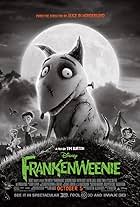If the new book "And Every Single One Was Someone" is any indication, we tend to prefer poetic representations of the Holocaust over challenging examinations of it. The book's 1,250 pages are filled with six million iterations of the word "Jew" and nothing else. It seems provocative and moving. But a poetic gimmick is still a gimmick. "Life is Strange", on the other hand, isn't a gimmick. It's a rich documentary made of something not so easily clumped together: personality.
Directed by Isaac Hertz, "Life is Strange" is the result of the two years Hertz and producer Sam Grundwerg spent interviewing 25 Jewish survivors of World War II. Now aging politicians, philosophers, writers, professors, mothers, fathers, and grandparents, they recall their respective Yiddish childhoods in various countries of Europe. The film's more recognizable participants include Shimon Peres, President of Israel, and children's author, Uri Olev. But each of them, whatever their illustriousness, fascinate, including Judith Rubinstein, a shrewd woman from Hungary who made it out of Auschwitz.
The documentary itself is clunky. The editing hops between topics and tones so your attention isn't so much hooked as it is repeatedly snagged. Particularly, there's a gnat-like pseudo-narrator in the voice of a young American boy. He comments on the disjunctures between the past and the present, intruding on the silences of the survivors' anecdotes that viewers would likely rather digest on their own. But "Life is Strange" is still valuable, and not just because the number of Holocaust survivors is ever-thinning. The distinctions between details like the participants' places of birth and their religiousness call for something people don't always want to do: careful listening.
In an artistic moment, I think Hertz even pulls off a risky switch of focus from the survivors to the dead. A simple, grainy black and white shot of birds flitting up into the sky follows a panel of Rubinstein describing Jewish reactions to the crematorium's rising smoke. The closure we form between Rubinstein's description and those birds feels importantly unsentimental. The shot of the birds is beautiful, but not cathartic. Its visual harshness doesn't seem to imply the birds---the dead---have been saved or known, if seen. Watching those endless flocks might not be so different from reading the same black word over and over again across thousands of white pages. But the version of this sorrow finds an appropriately flintier and more contextual home in "Life is Strange".






